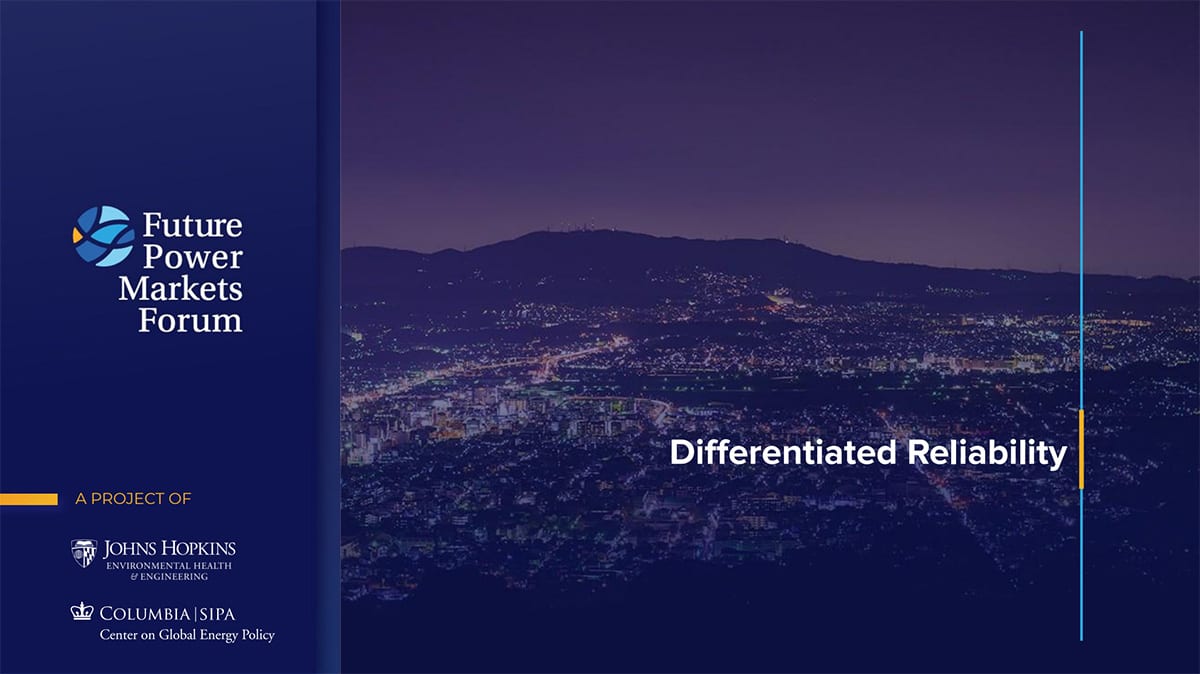Forum Topics
Differentiated Reliability
During Winter Storm Uri in February 2021, many oil and gas wells in Texas were shut down by power outages. Without the production capacity for natural gas, which at the time generated 47% of the state’s electricity, gas prices increased across the country and some Texas households remained without electricity for days.
Many of those wells were not on a “critical infrastructure” list, which was used to determine which facilities had top priority for electricity continuity. As facilities were added to the list, power was selectively restored and production ramped up.
The critical infrastructure list is one example of differentiated reliability – the idea that some load may want or need different level of service.
Differentiated reliability pricing is one way of integrating this concept into markets. Implementation of differentiated reliability raises a set of complicated questions, for instance:
- To what extent can or should individual end-users choose their willingness to accept the risk of outages?
- Can or should end-users have visibility on the costs and be willing to choose what they pay for central service reliability?
- How should any of this be structured specifically with respect to industrials, low and middle income consumers, or other discrete consumer groups?
- What technological developments and federal and state reforms are necessary for differentiated reliability to thrive?
Despite these open questions, an effective differentiated reliability mechanism could have lifesaving impacts during extreme whether, and could impact consumer prices at all times.
Relevant Publications
Enhancing Market Signals for Electric Resource Adequacy
Devin Hartman, December 2017
See page 8 for differentiated reliability section
Testimony to FERC on Climate Change, Extreme Weather And Electric System Reliability
Devin Hartman, May 28, 2021
Comments of the Electricity Consumers Resource Council (ELCON) on the Department of Energy Notice of RFI on Codes, Standards, Specifications and other Guidance for Enhancing the Resilience of Electric Infrastructure Systems Against Severe Weather Events,
Devin Hartman, August 23, 2019
See page 7 for discussion of differentiated reliability
Expert Commentary
These comments are personal opinions and do not represent the official position of an expert’s employer or clients or the Future Power Markets Forum.
Dr. Alexandra von Meier, California Institute for Energy and Environment, University of California, Berkeley, and Lawrence Berkeley National Laboratory
Energy efficiency and more granular prioritization of loads are increasingly important tools to ensure public health and safety during emergencies. The ability to sectionalize distribution circuits in a flexible manner — in conjunction with local solar generation, storage, and highly controllable loads — will also support the operation of ad-hoc microgrids for resilience. Such investment in agile distribution systems should be considered complementary, not alternative, to investment in the bulk grid. A key issue for policymakers to address is the legality of multi-customer microgrids, and the design of appropriate tariffs.
Devin Hartman, R Street Institute
Current policy requires nearly all electricity consumers to pay for and receive the same level of service reliability. Shifting to a policy framework where consumers receive a level of service based on their individual preferences could dramatically improve consumer welfare, ease the integration of renewable energy, and reduce the social consequences of large supply shortfalls.
Power Market Structure & Design
If you have something you would like to contribute to the topic you can include your comment here.

